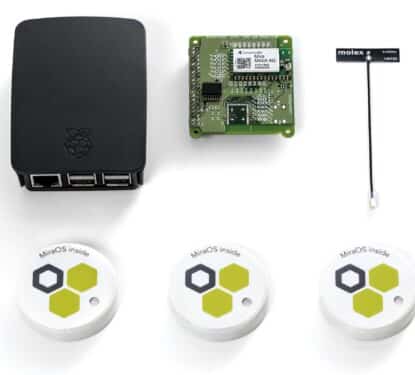Back in spring this year, Microsoft announced that they intended to invest $5 billion in Internet of Things (IoT) services over the next four years with the goal of “simplifying the journey in IoT.” They made it clear that they wanted any customer, no matter where they’re starting from, to be able to create trusted, connected solutions for their own digital transformation. This week they took a step towards that goal with the announcement of their Azure Digital Twins platform.
“Most IoT projects today start from a things-centric approach, but we’ve flipped that around. We’ve found that customers realize huge benefits by first modeling the physical environment and then connecting (existing or new) devices to that model. Customers gain new spatial intelligence capabilities and new insights into how spaces and infrastructure are really used,” the company said at their Ignite Conference in Orlando.
“Azure Digital Twins is a new platform for comprehensive digital models and spatially aware solutions that can be applied to any physical environment. Partners and customers can now query data in the context of a space — rather than from disparate sensors — empowering them to build repeatable, scalable experiences that correlate data from digital sources and the physical world,” the announcement continued.
The “digital twin” concept itself is not new. In fact, digital twins have long been used to model industrial equipment, such as engines, but only relatively recently have we begun to use the digital twin concept to model our physical environment.
In buildings, physical structures intersect with complex systems, which in turn interact with one another. Smart buildings have brought another layer to these facilities, a plethora of sensors and intelligent solutions that support the unique objectives of each building. All of this interacts with the dynamic element of people who occupy and visit the facility. Modeling such a complex environment is a challenge but unlocks a wide range of potential benefits for our buildings.
The digital twin is not new to Azure either. In fact, many companies have been building their own versions of digital twins on the Azure cloud service for years. Those third party versions consistently struggled to scale, however, which is what makes this announcement so exciting. The Internet of Things has opened up a huge market for cloud services, but Microsoft faces stiff competition from the likes of Oracle and Amazon. By offering an off-the-shelf digital twin capability like this, Microsoft may have found a “killer app” that will draw a significant portion of the market to standardize their entire Building IoT workloads on Azure.
“Azure Digital Twins has been developed as part of the Azure IoT platform to provide all of the scale, reliability, compliance, security, and privacy benefits Microsoft Azure is known for. It means environments of all types — offices, schools, hospitals, banks, stadiums, warehouses, factories, parking lots, streets, intersections, parks, plazas, and more — can become smarter spaces, and so can the supporting infrastructure and even entire cities,” explained Bert Van Hoof, Partner Group Program Manager at Azure IoT.

Azure Digital Twins will be publicly available for customers to begin building solutions on October 15th. Ahead of the release, Microsoft released a summary of the platform’s capabilities:
- Spatial intelligence graph. This is an actual virtual representation of a physical environment that models the relationships among people, places, and devices. This digital twin generates insights that allow organizations to build solutions that can improve energy efficiency, space utilization, occupant experience and more. This includes blob storage — the ability to attach and store maps, documents, manuals, pictures, etc. as metadata to the spaces, people and devices represented in the graph.
- Twin object models. The service also offers pre-defined schema and device protocols that align to a solution’s domain-specific needs to accelerate and simplify their creation. These benefits can apply to any interior or exterior space, as well as to infrastructure or even entire cities.
- Advanced compute capabilities. Users can define functions that generate notifications or events based on telemetry from devices and sensors. This capability can be applied in a variety of powerful ways. For example, in a conference room when a presentation is started in PowerPoint, the environment could automatically dim the lights and lower the blinds. After the meeting, when everyone has left, the lights are turned off and the air conditioning is lowered.
- Data isolation via multi- and nested-tenancy capabilities. Users can build solutions that scale and securely replicate across multiple tenants and sub-tenants by leveraging built-in multi- and nested-tenancy capabilities to ensure data is isolated.
- Security through access control and Azure Active Directory (AAD). Role-Based Access Control and Azure Active Directory serve as automated gatekeepers for people or devices, specifying what actions are allowed—and helping to ensure security, data privacy, and compliance.
- Integration with Microsoft services. Customers and partners can build out their solution by connecting Azure Digital Twins to the broader set of Azure analytics, AI and storage services, as well as Azure Maps, Azure High-Performance Computing, Microsoft Mixed Reality, Dynamics 365, and Office 365.
If the Azure Digital Twins platform lives up to its potential it could be very disruptive for this large and rapidly growing market. The announcement also demonstrates Microsoft’s commitment to the IoT in buildings and cities, a direct and quick result of its $5 billion investment pledge.
By reducing complexity and enabling the creation of innovative spatial intelligence solutions, Azure Digital Twins may provide organizations with the foundation they need to create the next wave of innovation in IoT. And with that, they accelerate our journey to an intelligent and connected world that empowers people and organizations to achieve more with their digital transformations.



